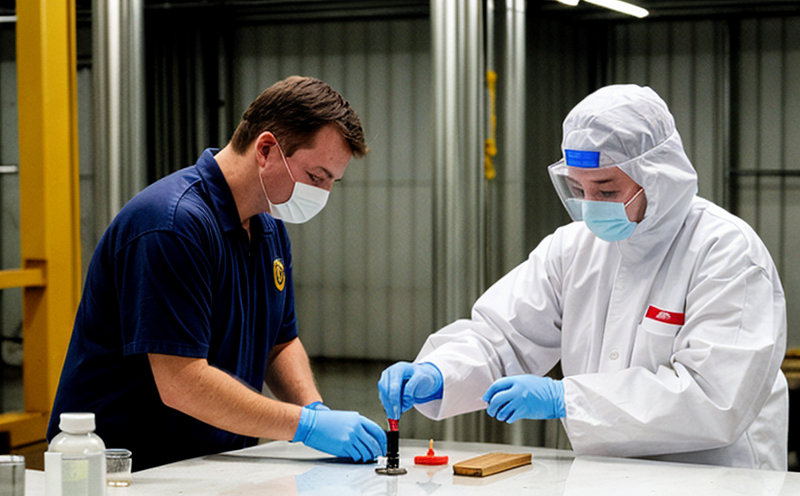ISO 22088-17 Thermal Durability Test for Packaging
The ISO 22088 series of standards provides a comprehensive framework for ensuring the safety and integrity of packaging materials under various environmental conditions. The specific focus of this standard, ISO 22088-17:2019 Thermal Durability Test for Packaging, is on evaluating how packaging materials perform under extreme temperature variations that simulate real-world storage and distribution conditions.
The thermal durability test evaluates the resistance of packaging to thermal stress. This type of testing is crucial in industries where product safety, shelf life, and customer satisfaction are paramount. For instance, food and beverage manufacturers need to ensure their packaging can withstand cold chain disruptions or high ambient temperatures without compromising hygiene standards. Similarly, pharmaceutical companies must guarantee that their packaging maintains the integrity of the medication inside, preventing contamination or deterioration.
The test protocol involves exposing the packaging materials to a series of temperature cycles, typically following a "damp heat" and "dry heat" method. This ensures that the packaging can withstand both humid conditions common in distribution centers and hot climates where it might be stored outdoors. The testing process closely follows international standards such as ISO 22088-17:2019 to ensure consistency, reliability, and compliance with global regulations.
The test setup includes precise control over temperature and humidity levels, often using climate chambers capable of simulating various environmental conditions. Specimens are subjected to a sequence of temperature cycles that mimic real-world storage scenarios. For instance, the packaging is first exposed to high temperatures (typically 75°C) for a specified duration, followed by a cooling phase at much lower temperatures (-20°C). This cycle may be repeated several times over a period ranging from days to weeks.
The testing process requires meticulous preparation of the specimens. Packaging samples are carefully prepared according to the standard’s specifications, ensuring that any defects or inconsistencies in the materials do not influence the test results. The integrity and adhesion properties of the packaging are crucial for this type of testing. After exposure to thermal stress, the packaging is inspected for signs of damage, such as cracks, delamination, or loss of structural integrity.
The outcome of these tests provides valuable insights into the durability and reliability of packaging materials under extreme conditions. This information is essential for improving product safety and quality control processes within manufacturing plants. It also helps in optimizing supply chain logistics by ensuring that packaging can withstand various environmental challenges without compromising product integrity.
Understanding the full scope of this test requires a deeper look at its real-world applications. For example, ISO 22088-17 ensures that packaging used for perishable goods like dairy products or pharmaceuticals maintains its protective function even in hot climates. Similarly, it helps ensure that non-perishable items such as electronics and toys can be safely shipped from cold manufacturing plants to tropical regions without damage.
Why It Matters
The thermal durability test for packaging is not just a formality; it plays a critical role in ensuring product safety, compliance with international standards, and customer satisfaction. Here’s why this test matters:
- Enhances Product Safety: Packaging that can withstand extreme temperatures protects the contents from contamination or degradation.
- Achieves Regulatory Compliance: Adhering to ISO standards like ISO 22088-17 ensures compliance with global regulations and reduces the risk of product recalls.
- Improves Supply Chain Efficiency: Packaging that performs well under varied environmental conditions minimizes logistics challenges, reducing waste and improving overall supply chain reliability.
- Enhances Customer Satisfaction: Reliable packaging ensures that products arrive in pristine condition, boosting customer trust and loyalty.
In addition to these benefits, the test also helps manufacturers identify potential weaknesses in their packaging design, allowing for iterative improvements. This proactive approach not only enhances product quality but also reduces long-term costs associated with product failures or complaints.
Benefits
- Enhanced Product Safety: Packaging that can withstand extreme temperatures protects the contents from contamination or degradation, ensuring product safety.
- Improved Compliance: Adherence to ISO standards ensures compliance with global regulations and reduces the risk of product recalls.
- Optimized Supply Chain: Reliable packaging minimizes logistics challenges, reducing waste and improving overall supply chain reliability.
- Increased Customer Satisfaction: Packaging that maintains its integrity during transportation ensures products arrive in pristine condition, boosting customer trust and loyalty.
The thermal durability test for packaging is a critical component of quality assurance processes. By ensuring the integrity of packaging under extreme conditions, this test helps manufacturers produce safer, more reliable, and more cost-effective products.
Customer Impact and Satisfaction
For customers in industries such as food and pharmaceuticals, the thermal durability test for packaging is crucial. It ensures that products arrive at their destination in perfect condition, thus enhancing customer satisfaction. By reducing the risk of product contamination or damage during transit, this test contributes to higher levels of customer trust and loyalty.
Moreover, compliance with international standards like ISO 22088-17:2019 helps manufacturers avoid costly recalls and legal issues. This not only protects their reputation but also ensures that they meet the expectations of regulatory bodies worldwide.
The test’s impact on customer satisfaction extends beyond product integrity. It also influences how customers perceive the brand as a whole. Brands that invest in thorough quality assurance processes, including thermal durability testing, are often seen as more responsible and committed to delivering high-quality products.





